The 1980s gave us many things worth celebrating – synthpop, John Hughes movies, and the birth of MTV – but let’s be honest about the decade’s hair crimes. While nostalgia has redeemed many questionable ’80s trends (neon accessories, anyone?), some hairstyles from this era remain indefensible even through the rosiest retrospective glasses. These gravity-defying, chemically-dependent creations weren’t just hairstyles; they were architectural statements that required environmental waivers and came with their own zip codes. Let’s revisit the most outrageous hair moments that even the powerful forces of nostalgia cannot rehabilitate.
1. The Feathered Mullet
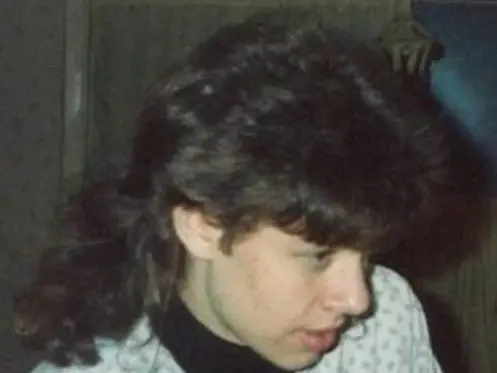
Business in the front, party in the back, and feathered on top – this unholy trinity created a hairstyle so visually confusing it deserves its own psychological study. Male country singers and hockey players particularly embraced this style, which required precision cutting to achieve the dramatically different lengths while maintaining the feathered texture on top. The style’s true horror emerged on windy days when the carefully arranged feathered top would collapse while the back portion maintained its wild freedom, creating an asymmetrical disaster that revealed the mullet’s true chaotic nature. Tangle Teezer writes that the mullet has quite the epic history that dates back centuries and crosses several oceans.
The maintenance required for this style bordered on obsessive, with regular trims needed to maintain the distinctive silhouette and daily styling to achieve the perfect feathering. While modern hipsters have attempted to reclaim the basic mullet with an ironic wink, the feathered variation remains firmly entombed in ’80s hair hell, where it rightfully belongs. Even those who wore it with pride in their youth now struggle to explain what possessed them to combine these contradictory styling techniques into one inexplicable head of hair.
2. The Quadruple-Tiered Perm
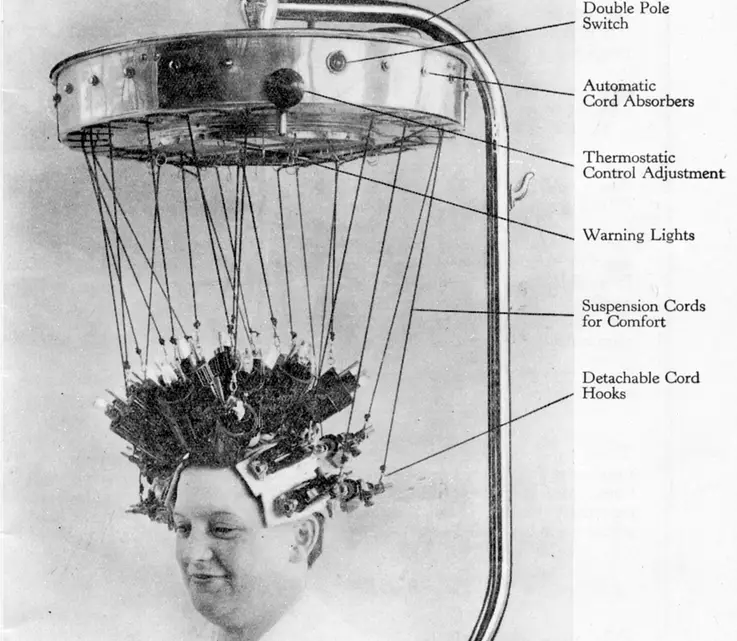
Not content with simply curling their hair, some ’80s style warriors opted for the quadruple-tiered perm – a graduated situation where each layer became progressively bigger than the one above it. The resulting silhouette resembled a human Christmas tree or a particularly ambitious wedding cake, creating a shape so distinctive it could be recognized from a block away. This style required intense chemical processing that left hair with the texture of steel wool and the fragility of spun sugar. Hankering for History goes further into the history of this once-popular hair trend.
The environmental impact of the hairspray required to maintain this architectural wonder likely set the ozone recovery back several decades. When viewed from behind, the quadruple-tiered perm created an optical illusion that the wearer’s head was significantly larger than anatomically possible, forcing them to enter doorways at an angle and making car travel with the windows down an impossibility. School photographers of the era deserve combat pay for figuring out how to frame these massive hair creations within standard portrait dimensions.
3. The Crispy Bang Wave

This front-focused disaster featured a wall of bangs curled under, teased to maximum height, and then frozen in place with enough hairspray to withstand gale-force winds. The distinctive crispy texture resulted from multiple applications of heat and aerosol products, creating bangs that could literally cut you if you got too close. The style’s defining characteristic was the perfect half-moon shape that stood at attention a minimum of three inches above the forehead, creating what amounted to a protective visor made entirely of damaged hair. Odele Beauty puts into perspective just how many remarkably different kinds of styles qualify as bangs, making these truly universal and enduring.
The crispy bang wave required nightly maintenance involving hot rollers, round brushes, and enough Final Net to qualify its users for hazardous materials handling certification. Many women discovered that after months of this routine, their bangs had been so thoroughly trained that they would maintain their curved position even when wet – a testament to both the style’s staying power and the concerning chemical alteration of the hair’s natural properties. Today’s humidity-sensing frizz control products would have been viewed as actual witchcraft by the women who dedicated significant portions of their lives to maintaining these architectural feats.
4. The Bi-Level (aka The Step Cut)
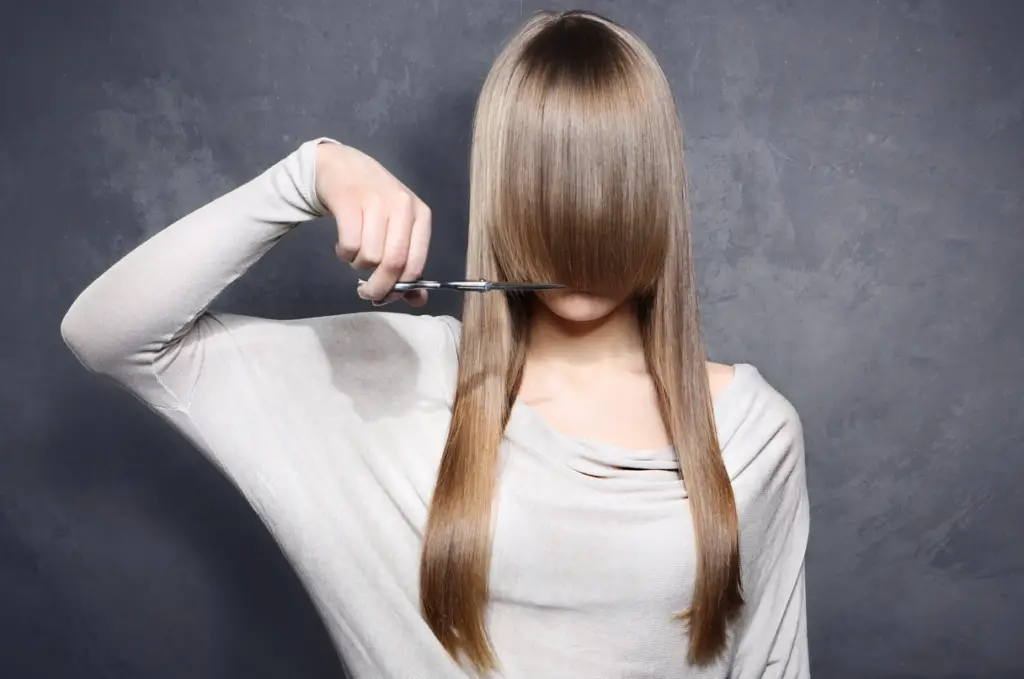
This aggressive interpretation of layering created a dramatic “step” effect where hair went from short to long with no gradual transition whatsoever. Unlike a gentle layered cut that blends various lengths, the bi-level made a virtue of its harsh line of demarcation, creating what looked like two completely different haircuts stacked on top of each other. The style gained mainstream popularity after Florence Henderson debuted it on later seasons of “The Brady Bunch,” proving that even America’s most beloved TV mom could make catastrophic hair decisions.
The bi-level’s most puzzling aspect was its complete disregard for hair’s natural growth patterns, creating a maintenance nightmare that required precision trimming every few weeks to maintain the dramatic shelf-like appearance. As it grew out, the bi-level transformed into something resembling a botched haircut, making the awkward growing-out phase an inevitability rather than a possibility. Even the most skilled modern stylist would struggle to make this intentionally jarring transition look flattering, which is why the style remains firmly locked in the vault of hair ideas we’ve collectively agreed never to revisit.
5. The Side Ponytail with Scrunchie Cascade

This deliberately asymmetrical style placed a high ponytail directly above one ear, then adorned it with multiple fabric scrunchies spaced at intervals down the length of the hair. The resulting creation resembled a fabric-embellished waterfall emerging horizontally from the head, creating balance issues for the wearer and a very real danger of eye injury for nearby friends. The higher the side placement and the more scrunchies involved, the more prestigious the style was considered.
The physical strain of having all one’s hair pulled to a single side created legitimate neck problems for dedicated followers of this trend, while the weight of multiple oversized scrunchies (particularly the coveted velvet or metallic varieties) caused the ponytail to droop progressively throughout the day. Physical education teachers across America developed specific instructions for removing these elaborate constructions before gymnastics activities, as the windmill effect of a spinning side ponytail could actually achieve velocity sufficient to cause minor abrasions to teammates.
6. The Gelled Flat Top with Shaved Sides
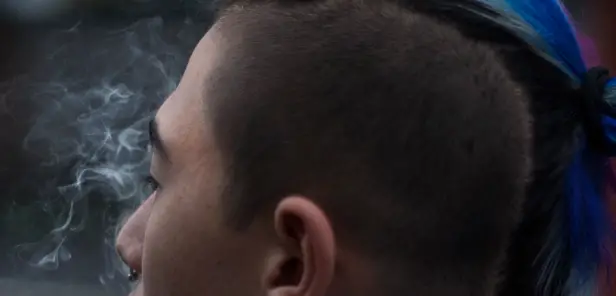
This military-meets-punk style featured sides shaved almost to the scalp while the top stood at rigid attention thanks to industrial-strength hair gel. The perfect flat top required hair capable of defying not just gravity but all known laws of physics, creating a surface so level you could theoretically balance objects on it. The dramatic contrast between the bare sides and the densely gelled top created a silhouette that resembled a chimney or factory smokestack more than a human head.
Maintaining this style required daily application of products with the consistency of cement and a relationship with one’s barber that bordered on codependency. The flat top’s architecture was so precise that even sleeping became a strategic challenge, with many devotees developing methods of positioning their heads to preserve their carefully constructed hair plateau overnight. Rain was the sworn enemy of the flat top enthusiast, with unexpected downpours capable of dissolving the gel’s structural integrity and creating what looked like a partially melted candle atop the wearer’s head.
7. The Permed Rat Tail
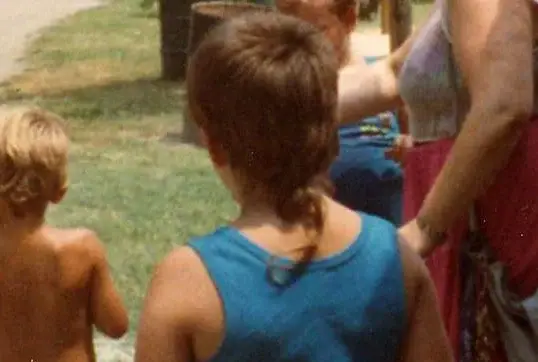
Combining two questionable hair choices into one unforgivable creation, the permed rat tail featured a long, skinny strand of hair hanging from an otherwise conventional cut, with the dangling portion treated to a tight perm that resembled a questionable science experiment. This style created the visual impression that the wearer had a small rodent hanging from the nape of their neck, hence the unflattering but accurate name. The contrast between the straight, normal-looking front and sides and the bizarre, curly appendage dangling in back created a follicular mullet of sorts – business everywhere except for that one bizarre party section.
Owners of permed rat tails often developed emotional attachments to their unusual appendages, sometimes growing them to extraordinary lengths that required special accommodation during activities like swimming or motorcycle riding. The rat tail’s cultural significance varied widely depending on geographic location, with some regions viewing it as a fashion statement and others recognizing it as a visual warning system about the wearer’s judgment. Even in today’s anything-goes hair culture where mullets have made ironic comebacks, the permed rat tail remains a bridge too far for even the most adventurous style revivals.
8. The Aqua Net Halo
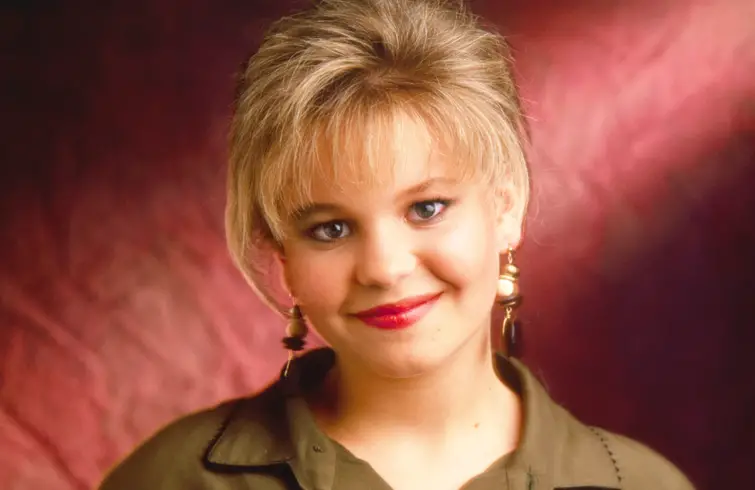
This feminine variation on big hair focused not on height but on width, creating a perfectly rounded cloud of hair that surrounded the face like a nimbus or halo. Achieving this look required teasing each section of hair at the root before gently smoothing the outer layer and securing the entire creation with enough hairspray to qualify as a fire hazard. The resulting silhouette added 4-6 inches to the wearer’s width on each side, creating doorway navigation challenges and making convertible cars an impractical transportation option.
The Aqua Net Halo inadvertently functioned as a weather forecasting system, as even slight humidity would cause unpredictable collapse of different sections, transforming the carefully constructed sphere into something resembling a deflating balloon. Contemporary photographs from school dances often capture the style in various stages of structural failure throughout the evening as body heat and humidity worked their destructive magic. Perhaps most concerning was this style’s tendency to absorb environmental odors, with many women discovering too late that their hair had become an efficient repository for cigarette smoke, food smells, and other atmospheric elements.
9. The Crimped Waterfall
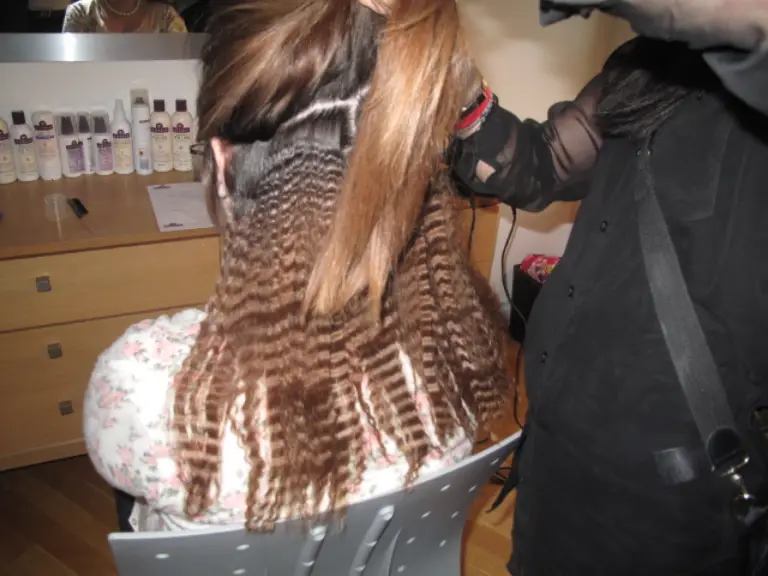
This time-intensive style combined the texture of crimped hair with an elaborate half-up arrangement where the upper portion cascaded down through a deliberately created gap in the back – the “waterfall” effect that gave this style its poetic name. Achieving this look required sectioning the hair into dozens of tiny portions that were each pressed between the teeth of a crimping iron, creating a uniform zigzag pattern throughout the entire head. The waterfall portion demanded architectural precision, with specific sections pulled back and arranged to flow through a carefully positioned horizontal opening.
The crimped waterfall required so much advance planning that many dedicated followers slept sitting up to preserve their work, knowing that recreating it could require hours. The style’s most puzzling aspect was how it managed to look simultaneously elaborate and unkempt, with the crimped texture creating volume and frizz while the waterfall arrangement attempted to impose order on the chaos. Even professional stylists struggled to maintain consistency with this look, which explains why many yearbook photos feature waterfall sections that appear to be flowing sideways rather than down, victims of gravity’s inevitable triumph over excessive hairspray.
10. The Asymmetrical New Wave Chop

This deliberately unbalanced style featured dramatically different lengths on each side of the head, often with one side closely cropped and the other hanging well below the ear or even to the shoulder. Additional chaos was introduced through randomly placed longer strands that were often dyed contrasting colors like purple, orange, or blue. The style rejected symmetry as aggressively as it embraced hair gel, with the longer portions often styled to defy gravity or project at unusual angles from the head.
Popularized by new wave musicians and characters in dystopian movies, this style made a virtue of looking like the result of a haircut performed during a seizure. The asymmetrical chop required constantly explaining to concerned strangers that no, half your hair had not fallen out due to illness or accident. Workplace acceptance of this style varied widely, with many corporations of the era developing specific hair policies in direct response to employees arriving with these dramatic new wave creations that executives feared would frighten clients or suggest the company was being infiltrated by punk rockers.
11. The Winger Perm

Named after the heavy metal band whose members popularized this style, the Winger perm combined the maximum volume of a female perm with distinctly masculine styling techniques. The result was a head of perfectly formed blonde spiral curls that expanded outward in all directions, creating what appeared to be a lion’s mane made entirely of ramen noodles. This style’s defining feature was its perfect spherical symmetry, with the curls expanding equally in all directions rather than being shaped or directed in any particular flow.
The Winger perm required significant chemical processing for most men to achieve, as the tight spiral pattern was rarely naturally occurring in male hair textures. The maintenance regimen involved specialized shampoos, diffuser attachments, and a technique of scrunching product into the curls that many men had to learn through trial and humiliating error. Perhaps most concerning was the style’s complete impracticality for everyday life, with the expansive nature of the curls making baseball caps, motorcycle helmets, and even car headrests problematic obstacles to maintaining the perfect spherical silhouette.
12. The Mall Bangs Explosion
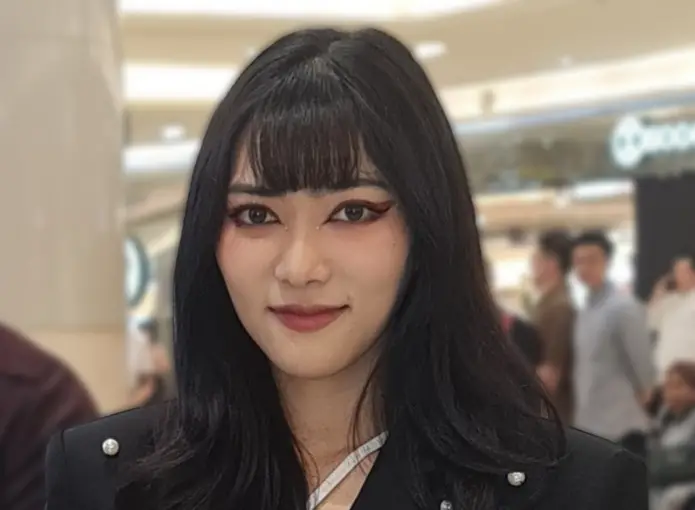
This style elevated the concept of bangs from a simple forehead-framing feature to the focal point of the entire head. Mall bangs required teasing the front section of hair to stand nearly perpendicular to the forehead before curling just the very ends under or outward and freezing the entire construction with hairspray. The resulting structure resembled a breaking ocean wave that had somehow been flash-frozen at the moment of maximum drama, hovering ominously over the wearer’s eyebrows.
The physics-defying height of mall bangs often reached 4-6 inches above the hairline, creating what amounted to a self-made headwind for the wearer. Maintaining this style throughout the school day required emergency hairspray applications between classes and strategic avoidance of rainy weather, low ceilings, and ceiling fans. Perhaps most puzzling was how this decidedly unnatural formation was considered attractive when it created a silhouette that resembled nothing found in nature and made the wearer’s forehead appear to be actively attempting to escape their face.
13. The Double Perm Disaster
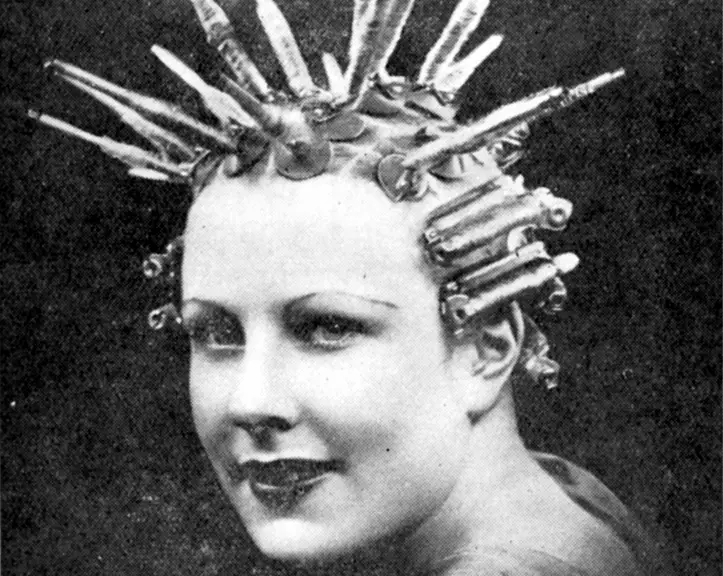
For those who felt a single perm wasn’t making enough of a statement, the double perm process introduced a second round of chemical processing to create curls of different sizes throughout the same head of hair. Typically, one perm rod size would be used for the under layers while another (usually smaller) rod created tighter curls on the top and around the face. The result was a textural nightmare that resembled an experiment in chaos theory more than an intentional hairstyle, with unpredictable curl patterns creating different shapes and volumes each time the hair was washed.
The double chemical process left hair with the texture of dried straw and the fragility of spun glass, prone to breaking at the mere suggestion of a brush. The contrasting curl sizes created an optical illusion of the hair actively growing while being observed, giving the impression of a living entity with its own expansion agenda. Women who committed to this style often found themselves trapped in a continuous cycle of deep conditioning treatments and trim appointments as they battled the progressive damage caused by this most aggressive of ’80s hair statements.
While fashion cycles continuously bring back elements from past decades, these particular ’80s hair disasters remain firmly quarantined in their era, serving as cautionary tales rather than inspiration. Perhaps their greatest value is in school photographs and wedding videos, where they provide irrefutable evidence that even the most questionable aesthetic choices are eventually forgiven, if never quite forgotten. Looking back at these styles reminds us that sometimes nostalgia has limits – and that perhaps we should be grateful for the contemporary focus on hair health that makes such structural extremes largely impossible with today’s emphasis on maintaining integrity over achieving maximum volume.


